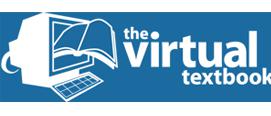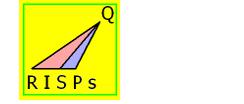Sequences and Series
AS Level
- Understand and use the binomial expansion of (a+bx)n for positive integer n; the notations n! and nCr; link to binomial probabilities
A Level
-
Extend to any rational n, including its use for approximation; be aware of when the expansion is valid
-
Work with sequences including those given by a formula for the nth term and those generated by a simple relation of the form xn+1 = f(xn); increasing sequences; decreasing sequences; periodic sequences
-
Understand and use sigma notation for sums of series
-
Understand and work with arithmetic sequences and series, including the formulae for nth term and the sum to n terms
-
Understand and work with geometric sequences and series including the formulae for the nth term and the sum of a finite geometric series; the sum to infinity of a convergent geometric series, including the use of |r | < 1; modulus notation
-
Use sequences and series in modelling
- ALL
- Teacher guidance
- Interactive resource
- Activity sheet
Teacher guidance
Sequences and Series
This resource, from Susan Wall, contains five activities designed to strengthen understanding of the use of notation when dealing with sequences and series. Each resource starts with teacher notes followed by a student activity.
Introduction to sequences and series contains a number of useful starter activities followed by a task designed for students to practise using mathematical notation.
Matching the sequence is a task where students have to match information to the given sequences. The task is extended by the fact that there will be some information remaining. Students have to devise their own sequence using this information.
APs and GPs: find a sequence contains two tasks designed to develop connections between the properties of the sequence and the notation describing it. In each task students have to match the information given about a sequence with the correct sequence.
Which belongs to which? is a task designed to encourage students to find and use a formula to describe the nth term of a sequence. Students are given the first few terms of a number sequences and are asked to which sequence a particular number belongs.
Sorting sequences is a task which really tests students understanding of the topic. Students are given three different, blank, Venn diagrams and have to lavel the sets of the diagrams using a list of different types of sequence.
Interactive resource
Arithmetic Series
This interactive excel file from The Virtual Textbook looks at arithmetic series and progressions. New sequences can be generated each time by the click of a button.
Students can be asked to find the value of a term in a sequence, the first term and the common difference from a range of examples. Questions that ask to find the first term above or below a certain value and the sum of the first n terms can also be generated.
The last two sheets include questions on arithmetic progressions. The first set of questions requires students to complete a table of values for five randomly generated progressions. The second looks at deducing the first term, common difference and sum of the first k terms, having being given two terms of the arithmetic series.
Geometric Series
This interactive excel file from The Virtual Textbook covers geometric series and progressions. New sequences can be generated each time by the click of a button.
The first sheet generates the terms of a geometric progression, for |r| ≥ 1, and the value of a further term.
The second interactive sheet demonstrates the effect of changing the common ratio for a geometric series. It displays two graphs which plot the value and sum of the first twenty terms of a geometric series with first term 0.8 and a changeable common ratio, for |r| ≥ 1.
The terms of a geometric progression, where |r| < 1 and given as a decimal or common fraction, can also be generated.
The resource also includes how a proof of the formulae for the sum to infinity can be deduced from the sum of the first n terms.As well as a demonstration of the effect of changing the common ratio for a geometric series for |r| < 1. It displays two graphs which plot the value and sum of the first twenty terms of a geometric series with first term 0.8 and a changeable common ratio.
The resource also contains a table of six changeable geometric progressions and invites users to complete the missing values that can then be revealed.
The file contains two printable A4 worksheets on number sequences and their formulae and a further worksheet on recurrence relations.
Activity sheet
Pascal's Triangle and the Binomial Theorem
This mathcentre resource introduces binomial expressions and how to use Pascal's triangle when expanding a binomial expression, before introducing the formal definition of the binomial theorem. The student handout contains detailed notes and a number of worked examples, as well as exercises for students to attempt. Answers for which can be found at the end of the document. The resource does not cover expansions involving negative or fractional powers.
Sequences and Series
There are three resources in this mathscentre collection. Each contain comprehensive notes, with clear descriptions, together with relevant diagrams and examples. Students wishing to review, and consolidate, their knowledge and understanding of sequences will find them useful. Each topic includes a selection of questions to be completed, for which answers are provided.
The sum of an infinite series allows students to recognise the difference between a sequence and a series; write down the sequence of partial sums of an infintie series and determine (in simple cases) whether an infinite series has a sum.
Limits of sequences covers the formula for the nth term of sequence; whether a sequence tends to positive or negative infinity; whether it tend to a real limit or diverges nad the notation for the limit of a sequence.
The sigma notation resource introduces the method of representing long sums, as well as asking students to expand a sum given in sigma notation, to write an explicit sum in sigma notation where there is an obvious pattern to the individual terms and to use rules to manipulate sums expressed in sigma notation.
Sequences and Series
RISPs (RIch Starting Points) are intended to enrich the learning of mathematics in A Level classrooms. The teachers' notes suggest the most appropriate use for each activity. This collection contains three resources:
Sequence Tiles requires students to define a position to term rule for a sequence and is extended to iterative sequences, using the set of cards given. Students have to decide the nature of their sequence: convergent and divergent increasing, decreasing, oscillating or periodic.
In Geoarithmetic sequences students are required to choose two numbers between zero and one and then generate a sequence by following a series of instructions. Students have to analyse the sequence formed, describe the nth term and speculate as to what wouls happen if the initial numbers are altered.
When does Sn = Un ? asks students to consider when does the nth term of a sequence equal the sum of the sequence. Students consider what happens when the number of terms in the sequence is altered and when the nature of the sequence is altered.




